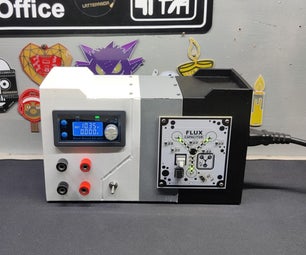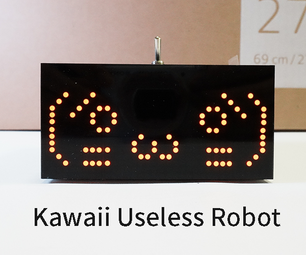Introduction: Pixi Smartlight
The Pixi smartlight is a co-production between WERC collective and Herman Kopinga. They were created for the festival Welcome To The Village in Leeuwarden, The Netherlands. Pixi’s are a creative solution for the lighting
of a dark path between the festival grounds and the camping of the festival. WERC designed and created three hundred digital lanterns which were spread out over the route. The Pixi’s communicate with each other turning on when others are near and sending a signal. Each visitor was handed a Pixi which sends a signal. The other would react to it and swarm all over the route. Lighting up the path and making for a pretty sight. The more of these there are the better it works. So create your own and modify it.
Step 1: Pixi Bare PCB
There are output and input mod pins open. Feel free to add what you want to create your own Pixi
Files availble at:
https://github.com/HermanKopinga/Buren
3D files available at:
http://www.thingiverse.com/WERC/designs
Step 2: Adding the Mcp73831
Charged controller for the solar input. Soldering
tip: Just add solder to one pad first. Position chip. Solder one pin then solder other pins
Step 3: Solder the Passive Components
r1: is to pull up reset pin high.
r2: is for the LDR voltage divider. r3 is the current limiting resistor for the charge led. r4 is to the charge current (500ma) of the solar charger.
c1 is filtering for solar input. c2 is output capacitants for solar. c4 is decoupling for NRF24L01. Please not polarity of the capicitors. Only important fore c1 c2 and c4
c3 is the capacitor to reset the atmega on upload from FTDI cable.
Step 4: Solder the Headers On
Please note: the difference between male and female headers. This can easily get confusing.
Step 5: Adding Atmega Socket and USB Chargeboard
Left: Socket for atmega (we love to socket our processors. Desoldering is no fun)
Right: tp4056 usb chargeboard and lipo protection module. We tried soldering this without headers. That became unreliable fast.
Step 6: Squishing the Atmega
3D DIP IC Squisher file can be downloaded at:
http://www.thingiverse.com/thing:204645
Step 7: Adding the Atmega328p
Note: orientation of pin 1.
Indicated by the dimple on the chip. The dip faces towards the LDR
Solder the switch on.
Step 8: Soldering the LDR
Orientation is not important.
We chose to bend it to the side of the board.
Step 9: Adding the LED, Solar Panel, Lipo Battery and Wireless Module
Very important: the polarity is very important with attaching the solar and lipo battery
Note: LED available in different pin-outs. This is not always obvious ont he sellers website. Unfortantly the adafruit dotstar apa102 strings have the pin-out reversed to our pcb lay-out. (Don't ask how we found out).
Add the nrf24L01 wireless module.
Step 10: Uploading the Code
Now we upload the code from
https://github.com/HermanKopinga/Buren
Step 11: Putting Together the Inside
We created a wooden panel to keep everything up inside the cup
Step 12: Putting It Together Inside the Cup
Step 13: Add the 3D Shine
Different 3D versions are available for download at:
http://www.thingiverse.com/WERC/designs







